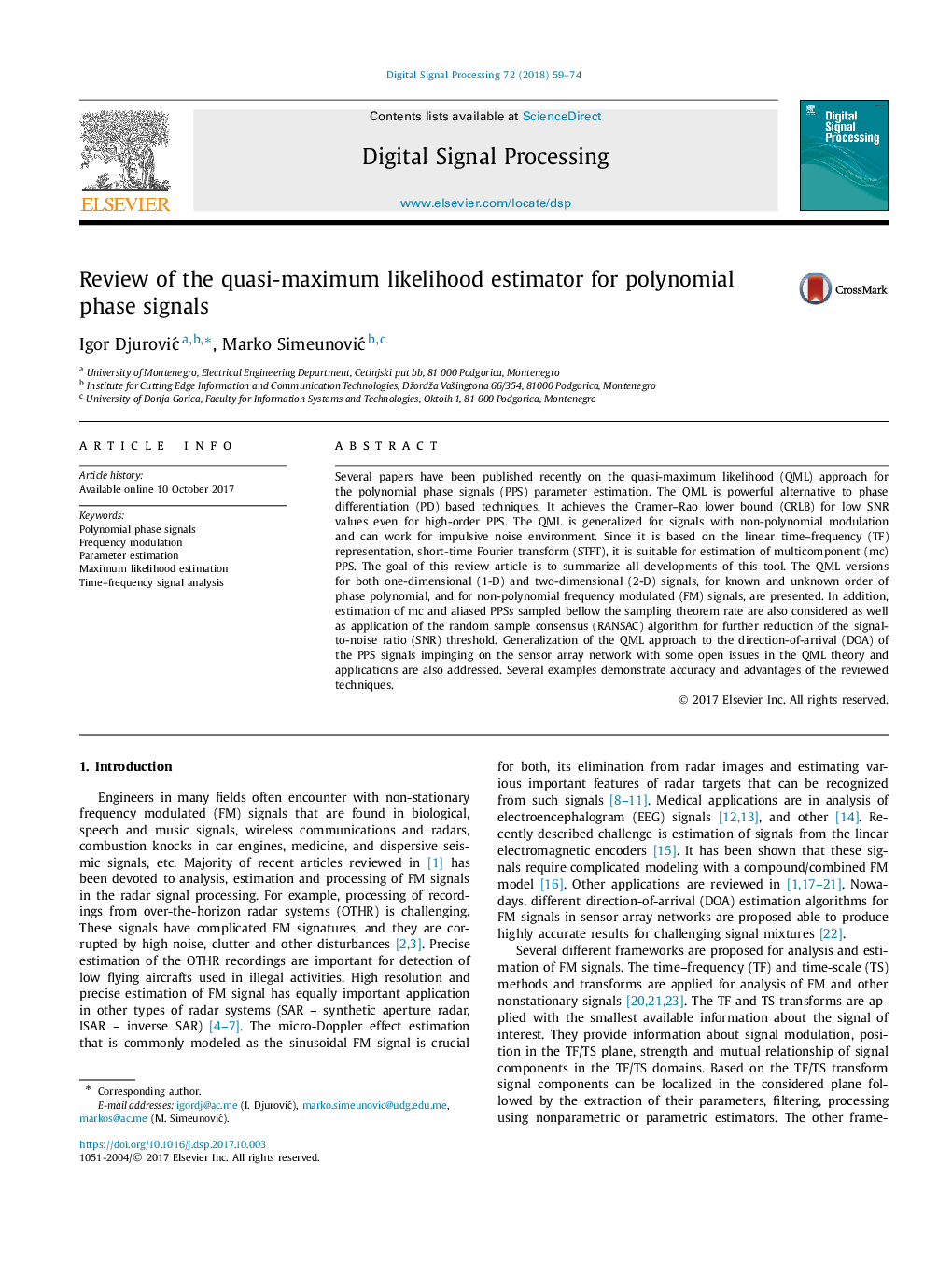| Article ID | Journal | Published Year | Pages | File Type |
|---|---|---|---|---|
| 4973750 | Digital Signal Processing | 2018 | 16 Pages |
Several papers have been published recently on the quasi-maximum likelihood (QML) approach for the polynomial phase signals (PPS) parameter estimation. The QML is powerful alternative to phase differentiation (PD) based techniques. It achieves the Cramer-Rao lower bound (CRLB) for low SNR values even for high-order PPS. The QML is generalized for signals with non-polynomial modulation and can work for impulsive noise environment. Since it is based on the linear time-frequency (TF) representation, short-time Fourier transform (STFT), it is suitable for estimation of multicomponent (mc) PPS. The goal of this review article is to summarize all developments of this tool. The QML versions for both one-dimensional (1-D) and two-dimensional (2-D) signals, for known and unknown order of phase polynomial, and for non-polynomial frequency modulated (FM) signals, are presented. In addition, estimation of mc and aliased PPSs sampled bellow the sampling theorem rate are also considered as well as application of the random sample consensus (RANSAC) algorithm for further reduction of the signal-to-noise ratio (SNR) threshold. Generalization of the QML approach to the direction-of-arrival (DOA) of the PPS signals impinging on the sensor array network with some open issues in the QML theory and applications are also addressed. Several examples demonstrate accuracy and advantages of the reviewed techniques.
